Hyundai Staria vs Maxus Mifa 9 – Which one offers the better deal?
Everyday use, family trips or long-distance drives – here’s where the differences show.
Discover whether Hyundai Staria or Maxus Mifa 9 fits your lifestyle better.
Costs and Efficiency:
When it comes to price and running costs, the biggest differences usually appear. This is often where you see which car fits your budget better in the long run.
Hyundai Staria has a evident advantage in terms of price – it starts at 42400 £, while the Maxus Mifa 9 costs 59100 £. That’s a price difference of around 16706 £.
Engine and Performance:
Power, torque and acceleration are the classic benchmarks for car enthusiasts – and here, some clear differences start to show.
When it comes to engine power, the Maxus Mifa 9 has a slight edge – offering 245 HP compared to 225 HP. That’s roughly 20 HP more horsepower.
In acceleration from 0 to 100 km/h, the Maxus Mifa 9 is slightly quicker – completing the sprint in 8.90 s, while the Hyundai Staria takes 10.20 s. That’s about 1.30 s faster.
In terms of top speed, the Maxus Mifa 9 performs slight better – reaching 180 km/h, while the Hyundai Staria tops out at 167 km/h. The difference is around 13 km/h.
There’s also a difference in torque: Hyundai Staria pulls minimal stronger with 367 Nm compared to 350 Nm. That’s about 17 Nm difference.
Space and Everyday Use:
Whether family car or daily driver – which one offers more room, flexibility and comfort?
Seats: Hyundai Staria offers distinct more seating capacity – 9 vs 7.
In curb weight, Hyundai Staria is minimal lighter – 2275 kg compared to 2385 kg. The difference is around 110 kg.
In terms of boot space, the Hyundai Staria offers significantly more room – 831 L compared to 466 L. That’s a difference of about 365 L.
In maximum load capacity, the Maxus Mifa 9 performs evident better – up to 2017 L, which is about 714 L more than the Hyundai Staria.
When it comes to payload, Hyundai Staria clearly perceptible takes the win – 775 kg compared to 615 kg. That’s a difference of about 160 kg.
Who wins the race?
The Hyundai Staria proves to be leaves the rival little chance and therefore becomes our DriveDuel Champion!
Hyundai Staria is the better all-rounder in this comparison.
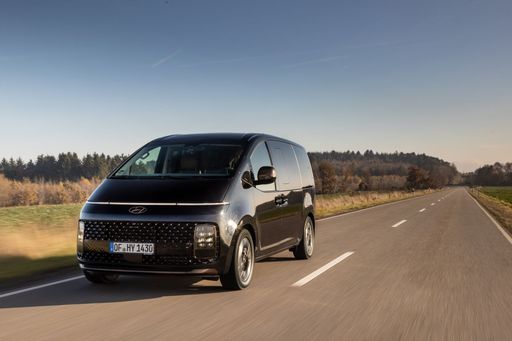
Hyundai Staria
Hyundai Staria
The Hyundai Staria stands out with its futuristic design, characterised by sleek lines and an expansive front grille that makes a bold statement on the road. Inside, it offers a spacious and versatile interior, providing a comfortable ride for both driver and passengers. This vehicle effortlessly combines practicality with a touch of luxury, appealing to families and professionals alike.
details @ hyundai.news
@ hyundai.news
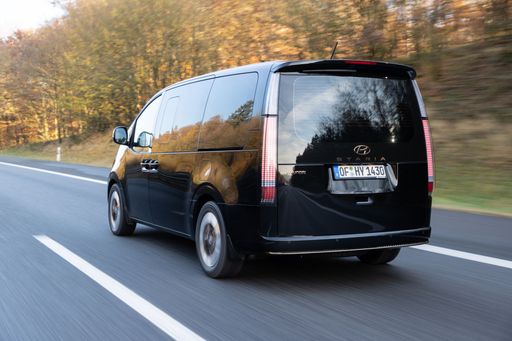 @ hyundai.news
@ hyundai.news
 @ hyundai.news
@ hyundai.news
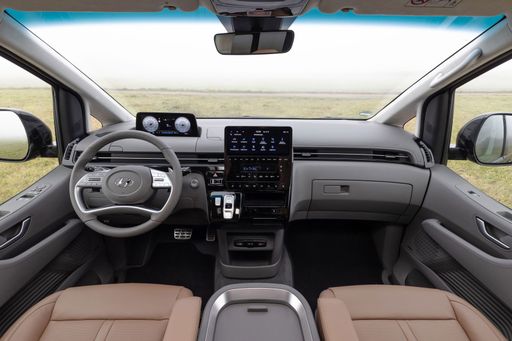 @ hyundai.news
@ hyundai.news
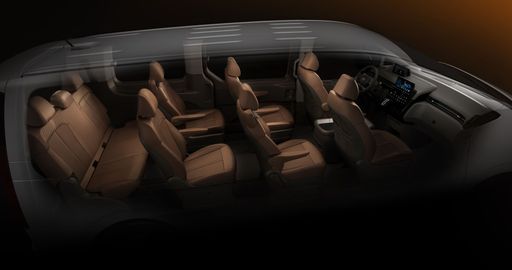 @ hyundai.news
@ hyundai.news
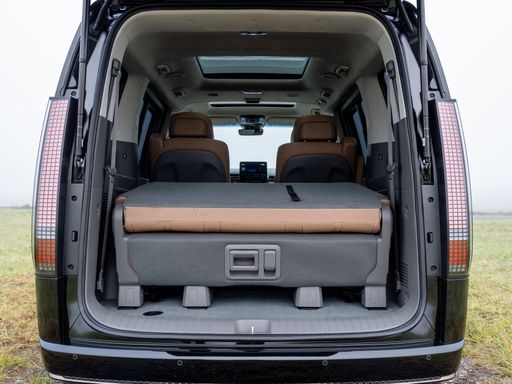 @ hyundai.news
@ hyundai.news
Maxus Mifa 9
The Maxus Mifa 9 stands out as a remarkable contender within the realm of electric vehicles, offering a sophisticated design that marries style with functionality. Its spacious interior is crafted with premium materials, providing both comfort and a sense of luxury for passengers. With an emphasis on cutting-edge technology, this vehicle delivers an impressive driving experience that pairs efficiency with performance.
details

|
|
|
|
|
Costs and Consumption |
|
|---|---|
|
Price
42400 - 50500 £
|
Price
59100 - 71100 £
|
|
Consumption L/100km
7.60 L
|
Consumption L/100km
-
|
|
Consumption kWh/100km
-
|
Consumption kWh/100km
21.3 - 21.8 kWh
|
|
Electric Range
-
|
Electric Range
430 - 440 km
|
|
Battery Capacity
-
|
Battery Capacity
-
|
|
co2
172 g/km
|
co2
0 g/km
|
|
Fuel tank capacity
65 L
|
Fuel tank capacity
-
|
Dimensions and Body |
|
|---|---|
|
Body Type
Bus
|
Body Type
MPV
|
|
Seats
7 - 9
|
Seats
7
|
|
Doors
5
|
Doors
5
|
|
Curb weight
2275 - 2345 kg
|
Curb weight
2385 - 2610 kg
|
|
Trunk capacity
117 - 831 L
|
Trunk capacity
466 L
|
|
Length
5253 mm
|
Length
5270 mm
|
|
Width
1997 mm
|
Width
2000 mm
|
|
Height
1990 mm
|
Height
1840 mm
|
|
Max trunk capacity
431 - 1303 L
|
Max trunk capacity
2017 L
|
|
Payload
605 - 775 kg
|
Payload
485 - 615 kg
|
Engine and Performance |
|
|---|---|
|
Engine Type
Full Hybrid
|
Engine Type
Electric
|
|
Transmission
Automatic
|
Transmission
Automatic
|
|
Transmission Detail
Automatic Gearbox
|
Transmission Detail
Reduction Gearbox
|
|
Drive Type
Front-Wheel Drive
|
Drive Type
Front-Wheel Drive
|
|
Power HP
225 HP
|
Power HP
245 HP
|
|
Acceleration 0-100km/h
10.20 s
|
Acceleration 0-100km/h
8.9 - 9.2 s
|
|
Max Speed
167 km/h
|
Max Speed
180 km/h
|
|
Torque
367 Nm
|
Torque
350 Nm
|
|
Number of Cylinders
4
|
Number of Cylinders
-
|
|
Power kW
165 kW
|
Power kW
180 kW
|
|
Engine capacity
1598 cm3
|
Engine capacity
-
|
General |
|
|---|---|
|
Model Year
2024
|
Model Year
2023
|
|
CO2 Efficiency Class
F
|
CO2 Efficiency Class
A
|
|
Brand
Hyundai
|
Brand
Maxus
|
What drive types are available for the Hyundai Staria?
The Hyundai Staria is available as Front-Wheel Drive.
The prices and data displayed are estimates based on German list prices and may vary by country. This information is not legally binding.
